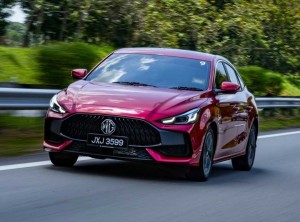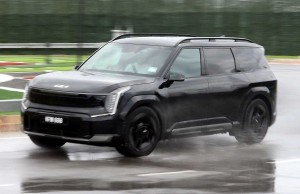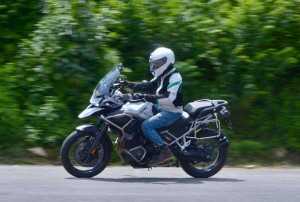Super Dron is based on the Ehang 216 (shown here).
KUALA LUMPUR: Entrepreneur Development Minister Datuk Seri Redzuan Md Yusof said he cannot disclose the location for the test flight of the "flying car" this Thursday, as it is a closed event by the private firm that built it.He told reporters at the Parliament lobby today that his ministry only helped to facilitate the project and create an environment for the company to operate.
The company building the vehicle would announce details later, he said, adding that the private test, if successful, would help it secure more funding.
The test site is believed to be at the Subang airport and Redzuan had recently announced that he would be onboard the test flight.
He said the project could pave the way for Malaysia to be a centre to produce such an "aerial vehicle" in future.
A Berita Harian report today pointed out that the flying vehicle on Thursday is not the Vector, which is being developed by Malaysian company Aerodyne Group.
It said it would be made by a drone manufacturer in China and would be referred as the Super Dron.
Featuring AI technology, Super Dron is an autonomous aerial vehicle that is believed to be based on the 2-seater Ehang 216 made by Beijing Yi-Hang Creation Science & Technology Co, a company based in Guangzhou.
Super Dron is the result of a joint venture between Malaysian company EastCap Bhd and Chinese firms Strong Rich Holdings and EHang Intelligent Equipment (Guangzhou).
EastCap is headed by Datuk Seri Zakwanhafiz Ahmad Ansari, whose prior experience was in the plantation sector.
Berita Harian cited EastCap as saying that Super Dron would have the ability to fly to a height of 300m with top speed of 130kph. Its battery capacity offers a range of 110km. The vehicle can carry two passengers or load not exceeding 600kg.
EastCap had previously said it plans to set up a local facility to assemble the Super Dron with an annual production rate of 10,000 units.

The Ehang 216.

It sees the unmanned drones as suited for use by Malaysian authorities in border patrols, tourism, agriculture and as an emergency assist vehicle.
The drones made by Beijing Yi-Hang Creation Science & Technology Co have commonly been used by its customers for aerial filming, photography and surveys. It plans to introduce the world’s first autonomous air taxi service for urban areas in the coming months.
The Ehang 216 is a two-seater with 16 propellers in a coaxial double-bladed design. It has made over 1,000 manned flights by July 2018 and its maximum range flown was 8.8km. It can fly 25 min for a range of 30–40km.
Redzuan had indicated last month that a second flying vehicle project is under development. This would likely refer to the Vector by Cyberjaya-based Aerodyne Group. It first showcased its product concept at the Langkawi International Maritime and Aerospace 2019 exhibition in March. Vector was then a scale model of a two-seater.

A scale mock-up of Aerodyne's flying vehicle on display at the Langkawi airshow in March.
Aerodyne is a four-year-old company with experience in drone technology.
The company was leery of calling their nascent product a flying car but instead said it was a “point-to-point air transportation system”. It is being pitched as a product for fleet operators rather than being opened to individuals to buy.
The prototype is being built in Japan, which has the supporting ecosystem for the flying-car industry.
Vector is electrically powered by four motors fed by a lithium-ion battery. The vehicle is said to have a payload of up to 200kg and could fly 50m above the ground at 60kph. It is expected to stay airborne for up to 90 minutes.
Prime Minister Tun Dr Mahathir Mohamad said on Oct 17 that he believes a day will come when cars can fly, but that day has yet to arrive.
“Well, the cars will fly one day, but not today.
"Nowadays you have drones, and drones can carry heavier and heavier weight. Maybe one day, we can fly on a drone, ” the Prime Minister said in jest to a question regarding flying cars.












